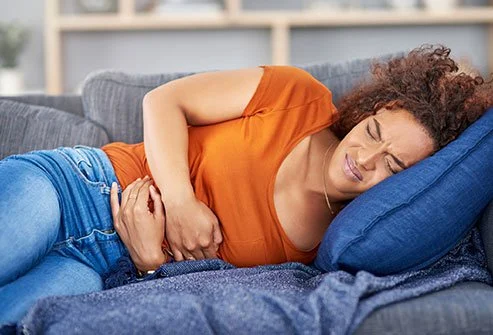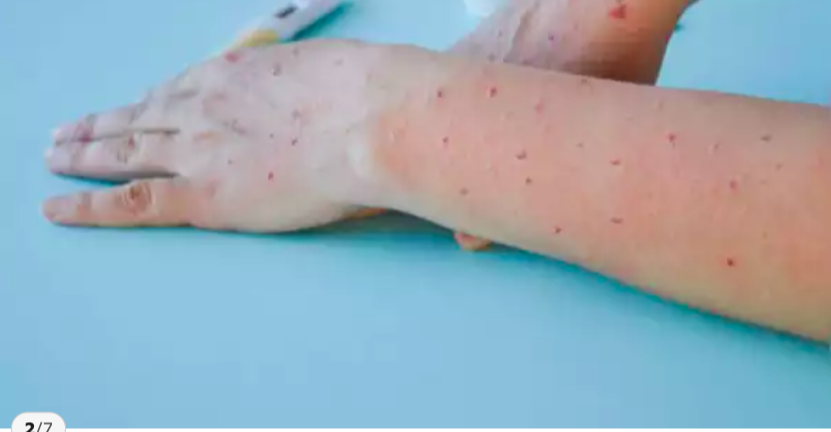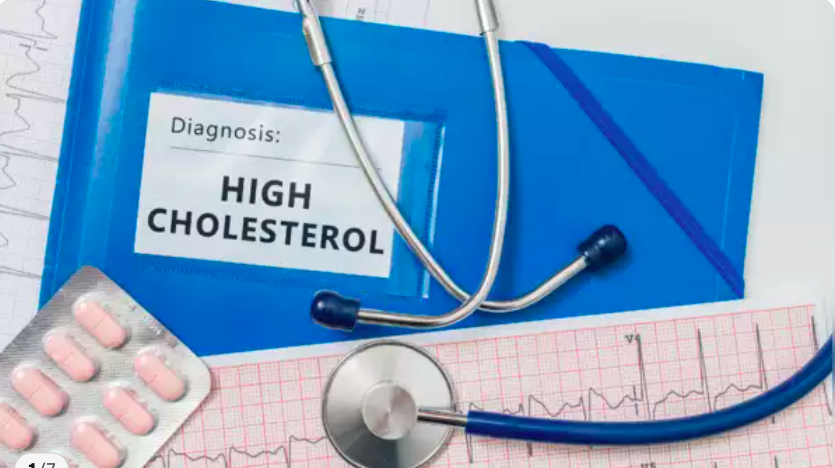Health
The Most Common Causes of Food Poisoning and How to Avoid Them

The Most Common Causes of Food Poisoning and How to Avoid Them

Everyone loves food, and the thought of not being able to taste it for even a day is unthinkable. But what happens when food poisoning sets in?
Chances are, you’ll get sick and fast. Food poisoning is typically caused by eating contaminated food, and there are several types of food poisoning that affect both adults and children.
In this blog post, we’ll be discussing the most common causes of food poisoning and how to avoid them. By reading this article, you’ll be well on your way to avoiding food poisoning in the future!
Types of food poisoning
Food poisoning can be an unpleasant experience, but it’s not always life-threatening. In fact, it’s estimated that food poisoning causes approximately 1.2 million illnesses and 160 deaths in the US each year.
Here are four types of food poisoning that you may be infected with: E. coli, salmonella, listeria, and campylobacter.
It’s important to know which one you’re infected with, and to take the appropriate steps to avoid getting sick. For example, wash your hands thoroughly and cook food properly using safe methods.
If you develop symptoms such as diarrhea or vomiting, seek medical attention immediately! Food poisoning is a preventable disease, and with a little bit of precaution, you can avoid getting sick in the first place.
Symptoms of food poisoning
Food poisoning is a serious issue that can occur from any food, but it’s especially dangerous for those who are young, elderly, or pregnant.
Make sure to know the symptoms of food poisoning so you can identify it and take the necessary steps to prevent it.
The most common causes of food poisoning are bacteria, viruses, and parasites. Remember to wash your hands and cook food safely from fresh produce. If you do get sick, seek medical attention right away!
How to avoid food poisoning?
Food poisoning is a common occurrence and can be really unpleasant. But it’s important to know the most common causes and how to avoid them.
Handwashing is the best way to prevent food poisoning, and it’s also important to avoid cross contamination. Make sure to cook all meat to the correct temperature and follow safe cooking methods.
Additionally, store leftovers properly in an airtight container or sealable bag.
FAQs
Can taking probiotics help me avoid getting food poisoning?
Probiotics are beneficial bacteria that can help in preventing the development of food poisoning. Taking probiotics on an empty stomach before eating will allow them time to reach your gut where they can do their job properly.
What are some tips for cooking foods safely and avoiding food borne illness?
When cooking food, make sure to follow these simple tips for safe preparation:
– Wash your hands thoroughly before cooking, clean all surfaces that may have come in contact with raw meat or poultry, and refrigerate cooked meats quickly after they’ve been served so they are not at risk of bacterial growth. – Make sure to cook food properly – it should be heated to the right temperature, covered, and stirrable.
– Follow label instructions to the letter when purchasing groceries. Avoid buying anything that is expired or looks questionable.
Are any particular foods more likely to cause food poisoning than others?
Some foods are more likely to cause food poisoning than others. Here are the most popular offenders:
1. Salmonella: Salmonella is a common agent of foodborne illness and can cause diarrhea, fever, and stomach cramps.
2. Shigella: Shigella is another common foodborne pathogen that causes diarrhea and fever.
3. E.coli O157:H7: E. coli O157:H7 is a particularly harmful type of E. coli that can cause kidney failure and even death in extreme cases.
4. Campylobacter: Campylobacter is a bacterial infection that can cause diarrhea, fever, and stomach pain.
How can I prevent food poisoning from happening in the first place?
Preventing food poisoning from happening in the first place starts by avoiding cross contamination. This means that you should not eat food from an unwashed hands, and should avoid touching any raw meat.
If you do get sick with food poisoning, drink plenty of fluids and take antibiotics if advised by a doctor. Make sure to wash all your fruits and vegetables carefully, especially if they are going to be eaten raw.
What are the most common food poisoning bacteria?
One of the most common ways to get food poisoning is by eating contaminated food. To help protect yourself from food poisoning, follow these tips:
1. Wash your hands often: Hand washing is one of the best ways to prevent food poisoning. By washing your hands often, you can Reduce your chances of getting food poisoning by as much as 90%.
2. Cook foods properly: Avoid overcooking or overusing salt or oil when cooking food. These ingredients can make food contamination more likely.
3. Eat safely from raw foods to delicacies- everything!: When it comes to food safety, make sure to eat everything you plan to! Raw meat, poultry, seafood, eggs and vegetables all contain harmful bacteria that can lead to food poisoning.
4. Choose fresh produce whenever possible: Buying fresh vegetables and fruits will help reduce the chances of getting food poisoning because they are less likely to be contaminated.
5. Store leftovers properly in the fridge or freezer: Thawing and cooking food properly will help reduce the spread of bacteria, but make sure to store leftovers safely in the fridge or freezer until you’re ready to eat them.
Conclusion
Food poisoning is a serious health condition that can affect anyone at any time. By following the tips listed in this blog, you can protect yourself from food poisoning and enjoy a delicious and healthy meal without any worry.
Make sure to read through the blog carefully and take note of the different types of food poisoning that you may be vulnerable to.
Remember to always wash your hands thoroughly and avoid eating food that is not properly cooked. Thank you for reading and we hope that this blog has provided you with valuable information on how to avoid food poisoning.
Tell us anything you know about Food Poisoning
Remember your health is wealth
Please, let us know your thoughts in the comments section.
Health
6 Daily Habits to Naturally Lower Cholesterol Levels
Health
Understanding the Rapid Spread of Monkeypox’s New Strain Clade 1b

Understanding the Rapid Spread of Monkeypox’s New Strain Clade 1b: Key Facts on Transmission, Symptoms, Severity, and Vaccination
Monkeypox, a viral disease with symptoms resembling smallpox, has recently gained attention due to the emergence of a newstrain, Clade 1b.
This article delves into the essential details about this new variant, including how it spreads, its symptoms, its severity, and the current state of vaccinations.
Our goal is to provide a comprehensive and clear understanding of this evolving situation, enabling readers to stay informed and prepared.
Monkeypox, once a rare and somewhat obscure disease, has recently become a significant public health concern due to the emergence of new strains.
Among these, Clade 1b has been noted for its rapid spread and distinct characteristics.
As we navigate through the complexities of this variant, it is crucial to grasp the fundamentals of its transmission, symptoms, severity, and preventive measures, including vaccination.
Understanding Monkeypox Clade 1b
What is Monkeypox?
Monkeypox is a zoonotic virus belonging to the Orthopoxvirus genus, which also includes smallpox.
First identified in monkeys, it can infect humans through close contact with infected animals or individuals.
While it shares similarities with smallpox, monkeypox tends to be less severe and less transmissible.
Clade 1b Overview
Monkeypox has several clades (strains), with Clade 1b being the most recent and notable for its rapid spread.
This strain has shown increased transmissibility compared to previous clades, raising concerns among public health officials.
Transmission of Clade 1b
Modes of Transmission
Clade 1b spreads primarily through:
- Direct Contact: Contact with bodily fluids, skin lesions, or contaminated surfaces of an infected person.
- Respiratory Droplets: Prolonged face-to-face interaction can lead to transmission through respiratory droplets.
- Animal Contact: Infected animals, particularly rodents and primates, can transmit the virus to humans.
Environmental Factors
Transmission rates can also be influenced by environmental factors such as:
- Crowded Living Conditions: Higher transmission rates are observed in densely populated areas.
- Sanitation Practices: Poor hygiene and sanitation can facilitate the spread of the virus.
Symptoms of Monkeypox Clade 1b
Early Symptoms
The symptoms of Clade 1b may resemble those of other viral infections, making initial diagnosis challenging.
Early symptoms include:
- Fever: A sudden onset of high temperature.
- Headache: Severe headaches that can persist for days.
- Muscle Aches: Generalized muscle pain and discomfort.
- Fatigue: Extreme tiredness and weakness.
Rash and Skin Lesions
A defining feature of monkeypox is the rash, which typically progresses through several stages:
- Macules: Flat, discolored spots on the skin.
- Papules: Raised bumps.
- Vesicles: Fluid-filled blisters.
- Pustules: Pus-filled lesions that eventually crust over.
Severe Symptoms
In more severe cases, symptoms may include:
- Encephalitis: Inflammation of the brain, leading to neurological symptoms.
- Pneumonia: Infection of the lungs that can cause difficulty breathing.
- Secondary Infections: Bacterial infections that may complicate the healing process.
Severity of Clade 1b
General Outlook
Clade 1b has been associated with a higher transmission rate and more severe outcomes compared to other strains. However, the overall severity can vary widely among individuals.
Factors influencing severity include:
- Immune System Status: Individuals with weakened immune systems or pre-existing conditions may experience more severe symptoms.
- Age: Young children and elderly individuals are at higher risk of severe illness.
- Timeliness of Medical Care: Early medical intervention can significantly affect the outcome.
Mortality Rates
The mortality rate for Clade 1b is currently under study, but initial data suggest it may be higher than previous strains. Prompt medical attention and supportive care are crucial in reducing the risk of severe outcomes.
Vaccination and Prevention
Current Vaccines
Vaccination is a key strategy in controlling the spread of monkeypox.
The following vaccines are relevant:
- Smallpox Vaccine: The smallpox vaccine is effective against monkeypox due to the similarities between the viruses. It provides protection for those who have been recently vaccinated or who received it in the past.
- Monkeypox-Specific Vaccine: Research is ongoing into vaccines specifically targeting monkeypox, with several candidates showing promise in trials.
Vaccination Recommendations
Public health authorities recommend vaccination for:
- Healthcare Workers: Individuals who are at higher risk due to their profession.
- High-Risk Populations: People in areas experiencing outbreaks or those with frequent exposure to infected individuals.
Preventive Measures
In addition to vaccination, preventive measures include:
- Good Hygiene: Regular handwashing and use of hand sanitizers.
- Avoiding Contact: Minimizing close contact with individuals displaying symptoms or with infected animals.
- Isolation: Infected individuals should isolate themselves to prevent the spread of the virus.
Conclusion
The emergence of Monkeypox Clade 1b represents a significant challenge to global health. Its increased transmissibility and potential for severe outcomes highlight the importance of staying informed and proactive.
By understanding its transmission, symptoms, and preventive measures, individuals and communities can better protect themselves and mitigate the impact of this new strain.
FAQs
1. What makes Clade 1b different from other monkeypox strains?
Clade 1b is noted for its increased transmissibility and potentially more severe outcomes compared to other strains.
It spreads faster and may lead to more serious health issues, necessitating closer monitoring and enhanced preventive measures.
2. How can I tell if I have monkeypox or another viral infection?
Monkeypox often begins with flu-like symptoms and progresses to a distinct rash.
If you experience these symptoms, especially if you’ve been in contact with someone who has monkeypox or are in an outbreak area, seek medical advice for accurate diagnosis and testing.
3. Is the smallpox vaccine effective against Monkeypox Clade 1b?
Yes, the smallpox vaccine offers protection against monkeypox, including Clade 1b, due to the similarities between the two viruses.
However, its effectiveness may vary based on factors such as time since vaccination and individual health conditions.
4. Are there any new vaccines specifically for monkeypox?
Research is ongoing to develop and approve vaccines specifically targeting monkeypox.
Several candidates are in various stages of clinical trials, with some showing promising results in enhancing protection against monkeypox strains, including Clade 1b.
5. What should I do if I suspect I have monkeypox?
If you suspect you have monkeypox, contact a healthcare provider immediately. They can guide you through testing, diagnosis, and appropriate care.
In the meantime, practice good hygiene and avoid close contact with others to prevent spreading the virus.
References:
Health
Understanding the Low Risk of Mpox Outbreak in India and Our Preparedness Measures

-

 Trending Stories1 year ago
Trending Stories1 year agoCDC: 1 in 4 Americans Still COVID-Free by End of 2022
-

 Health5 years ago
Health5 years agoMeghan Trainor Shares Motivational New Song ‘Blink’
-

 Health2 years ago
Health2 years agoHow Long Does Monkey Pox Last Before It Surfaces in the Body?
-

 Health2 years ago
Health2 years agoWhat Causes Swollen Body? Understanding Edema and its Triggers
-

 Health4 months ago
Health4 months agoHow Do Pawpaw Seeds Support Cardiovascular Health?
-

 Health3 years ago
Health3 years agoNutrition and the Importance of a Fitness Program – 3 Things to Know
-

 Health3 years ago
Health3 years ago5 Weird Reasons Why Pimples Disappear After Marriage
-

 Health2 years ago
Health2 years agoHealth Benefits Of Pawpaw Seed? 7 Things To Know






